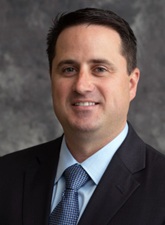ConnectiCare President Eric Galvin: Collaborative approach to reduce health care costs could have national implications
An insurance company looking to reduce customer costs may seem like an oxymoron, but that is what ConnectiCare, in conjunction with Saint Francis Healthcare Partners and other industry participants, is doing.

“We can do better,” said ConnectiCare President Eric Galvin. “People may make good livings and work hard, but when it comes to health care they”™re often put in a position where they really can”™t afford what they need. The current model of health care delivery and coverage is unsustainable, and we”™re trying to address that.”
The “we” in this case is the recently formed Value Based Relationships (VBR) work group within the Connecticut Health Council, an association of health sector firms that work to advance the development of businesses, initiatives and technology that improve health care and wellness both nationally and in the state.
Galvin said the seed for the VBR was planted about two years ago when he and Saint Francis President and CEO Jess Kupec “looked across the table at each other (at a Council meeting) and said, ”˜There”™s got to be a better way to do this,”™ to take the waste out of the system and, most importantly, to get a better result for our patients.”
At the center of the issue, Galvin said, is the industry”™s fee-for-service model, wherein a patient goes to his or her doctor and pays for that visit. That relatively simple arrangement is complicated by what Galvin said is a confusing array of prescribed but uncoordinated interactions with providers of supporting products, services and payments, which can lead to duplicative or unnecessary procedures with lower quality outcomes and higher costs.
The VBR is seeking to establish an industrywide collaborative approach that reduces those inefficiencies and shifts the focus from the volume-based, fee-for-service model to value-based care ”” a movement that has become increasingly popular over the past several years.
A national survey last year estimated that nearly 80 percent of payers reported improvements in care quality, with 64 percent reporting improvements in provider relationships and 73 percent saying that patient engagement had improved. Pure fee-for-service accounts for 37.2 percent of reimbursement and is projected to fall below 26 percent by 2021.
The VBR”™s goal, Galvin said, is to allow the health care consumer to pay for the quality of outcomes rather than the number of individual services a system provides them. Its pilot project is focused on type 2 diabetes, a choice driven not only by national data ”” the risk of type 2 diabetes increases after age 45, while the condition is “increasing dramatically among children, adolescents and younger adults,” according to the Mayo Clinic ”” but by a personal story as well.
“A colleague here has a daughter who was diagnosed with type 2 about two years ago,” Galvin said. “I watched him struggle with that as a parent, but also the point of view of the patient experience. He had the personal care physician, the endocrinologist, the provider”™s office ”” all good resources with good intentions, but they were essentially overwhelming him with information. It gets to a point where it”™s so difficult to try to boil down that ocean of information to what you really need to concern yourself with.”
The VBR consists of health plan representatives and provider systems, doctors, pharmaceutical companies, consumer advocates, insurance brokers, social services providers and others across the health care continuum ”” all working together to establish integrated models of care based on comprehensive metrics and quality outcomes, Galvin said.
By beginning with a focus on a single disease, he added, the work group is able to approach the best outcome creatively and as an integrated system rather than as individual stakeholders ”” allowing the VBR to test various approaches in improving how and where care is delivered.
Dozens of firms belong to the VBR, which meets on average every six weeks. While Galvin said that not every participant is at every meeting, he noted that the wide range of participants involved ”” from banks and law firms to pharma company Novo Nordisk, health care providers like the Connecticut Children”™s Medical Center, CHR and Yale New Haven Health System and fellow insurers Aetna, Anthem Blue Cross Blue Shield and UnitedHealthcare ”” proves the widespread collaboration works.
“I know my peers and my competitors in Connecticut reasonably well,” he said. “And while we”™re obviously competing with each other for customers, we”™re pretty united on the concept here.”
Galvin said that, should the VBR initiative work as well as its members believe it will, it could serve as a model for other states and the country at large.